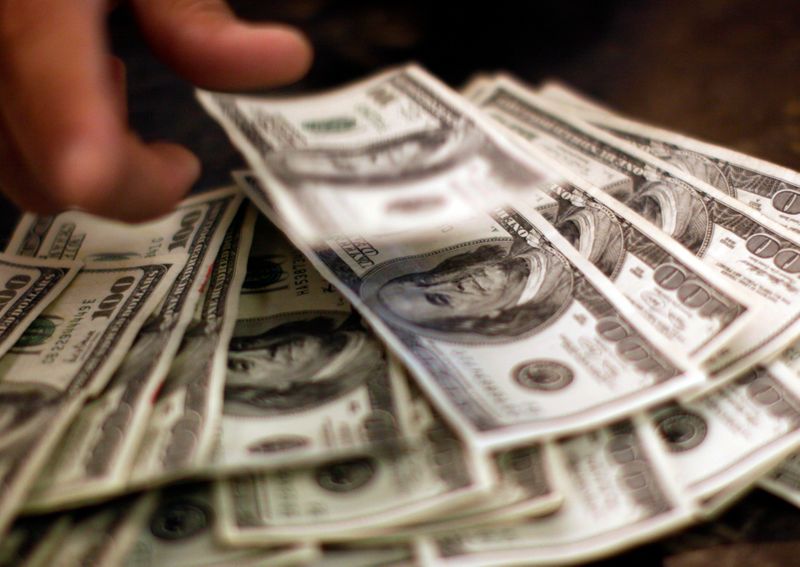NEW YORK/LONDON/TOKYO (Reuters) -The yen strengthened sharply against the dollar on Tuesday, leading some in the market to believe Japanese policymakers had intervened – although others said the size of the move was not convincing enough.
Traders have been on watch for weeks for an intervention by Japanese officials to combat a sustained depreciation in the yen.
“It has all the hallmarks of intervention,” said Michael Brown, market analyst at Trader X in London, about the move, which saw the dollar break above the 150 level for the first time since October 2022, before quickly falling to a low of 147.30 as the yen surged.
“It would have to be an incredible coincidence for it not to be,” said Brown.
The dollar rose as high as 150.165. It was recently at 149.05.
However, Colin Asher, senior economist at Mizuho in London, said the size of the move compared to prior interventions looked small.
“It could just be people expecting intervention and then reacting to what they believed to be intervention,” said Asher. “That said, it’s quite rare for a currency to move so aggressively in such a short amount of time without some reason. Such a move is usually intervention.”
The 150 level is one that many traders suspect could mark the point at which Japanese authorities, who have reiterated their concern about excessive volatility and currency weakness, could intervene.
“The market is obviously very nervous around these levels at 150. For me, it’s nervousness with traders cutting their long positions,” said Niels Christensen, chief analyst at Nordea in Copenhagen.
“I imagine if this was intervention then they would confirm it to make the most of it. They would follow it up with more to really wash out the long dollar-yen positions.”
To support the yen, authorities need to tap Japan’s foreign reserves of dollars to sell for yen. The finance minister issues the order to intervene, and the Bank of Japan executes the order as the ministry’s agent.
A senior Japanese ministry of finance official declined to comment on whether Japan had intervened in foreign exchange markets. The New York Federal Reserve did not respond to requests for comment.
Some traders said the BoJ may have been conducting so-called rate checks, where central bank officials call dealers and ask for buying or selling rates for the yen. This is seen by traders as a possible precursor to intervention.
“One of our traders thinks it was a bit of price checking rather than explicit action for now but it’s unclear,” said Jeremy Stretch, head of G10 FX strategy at CIBC Capital Markets in London.
Japanese authorities are facing renewed pressure to combat a sustained depreciation in the yen as investors eye prospects of higher-for-longer U.S. interest rates, while the Bank of Japan remains wedded to its super-low interest rate policy.
Japan bought yen in September 2022, its first foray into the market to protect its currency since 1998, after a Bank of Japan (BOJ) decision to maintain an ultra-loose monetary policy drove the yen as low as 145 per dollar. It intervened again in October last year after the yen plunged to a 32-year low of 151.94.
“Some people might think this was a shot across the bows from the BOJ,” Stretch said of Tuesday’s move.
Read the full article here










